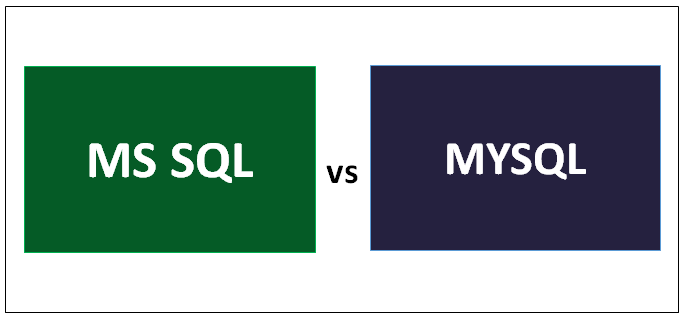

That means that enterprises can run the database system across three distinct platforms, though users still don’t have the option to utilize specific capabilities when using SQL Server on Mac OS X or Linux. MSSQL Server was developed by Microsoft for Windows OS only, but it has since made RDBMS available for both Linux and Mac OS too. The majority of these differences are related to the architecture and occur behind the scenes, so the average user will typically not notice them.īut DBAs should still understand the differences as they’re so important when choosing between MySQL and MSSQL. Yes, MySQL and MSSQL Server may be similar in multiple ways, primarily with regards to their interfaces and basic standards, but they operate in significantly different ways.
#SQL VS MYSQL CODE#
Regardless of your chosen server, the performance will mainly hinge on your DBA’s ability for optimizing code and queries.
#SQL VS MYSQL SOFTWARE#
MySQL and MSSQL are capable of handling software projects big and small, so you can expect similar levels of performance. MSSQL operates on Windows, so it’s most commonly part of a Windows environment. You can run MySQL on Windows or Linux, typically within a LAMP environment. Both platforms have more than two decades’ history behind them, and have established solid market footholds. MSSQL dates back to 1989, but the open-source MySQL is slightly more recent as it was launched back in 1995. As a result, you can connect MySQL and MSSQL without getting involved in complex coding.
#SQL VS MYSQL DRIVERS#
DriversĬonnection drivers for virtually any popular language can be found online relatively simply. Syntaxīoth platforms share a similar syntax, though there are some minor differences across create, read, update, and delete (CRUD) statements. They can be used for projects of all sizes, capable of supporting millions of daily transactions. MySQL and MSSQL have the ability to scale with your business as it continues to grow. You will typically be offered a choice of MySQL vs MSSQL when you sign up for a hosting service. With regards to running web applications, MySQL and MSSQL Server are the most widely used databases (with the exception of Oracle). MySQL and MSSQL leverage both primary and foreign keys for creating relationships between tables. Fortunately, MySQL and MSSQL Server provide high-quality performance speeds. Quality PerformanceĪs databases are responsible for both retrieving and storing data in the shortest time possible, they are your applications’ backbone.

MySQL and MSSQL utilize the standard table model for column-and-row-based data storage found in relational databases. Let’s cover the major similarities first: Tables While MySQL and MSSQL may appear similar, the architecture they are built upon is different. The majority of developers, though, specialize in either - usually not both. MySQL and MSSQL Server share some similarities, as they are both relational databases.

In the following MySQL vs MSSQL Server comparison, we’ll check out the basic similarities and differences between both options. This is how dynamic apps and sites undertake virtually all user requests.

SQL is the preferred language for relational databases, regardless of whether you intend to store, edit, or retrieve data. MySQL or MSSQL: What Makes Them Similar and Different We’ll look at the main differences between them, and we’ll delve into how they perform. So, we’ve created this comprehensive MySQL vs MSSQL Server guide. Taking time to think your options over will help you pick the best RDBMS for your needs.īut that’s easier said than done. But database administrators (DBAs) and programmers should consider how MySQL and MSSQL Server differ before they choose one or the other. MySQL is an open-source relational database management system (RDBMS), and MSSQL Server is an RDBMS developed by Microsoft.Įnterprises can pick from several editions of MSSQL Server based on their budget and unique requirements. MySQL and Microsoft SQL Server ( MSSQL) are two of the most popular enterprise database systems in the world.


 0 kommentar(er)
0 kommentar(er)
